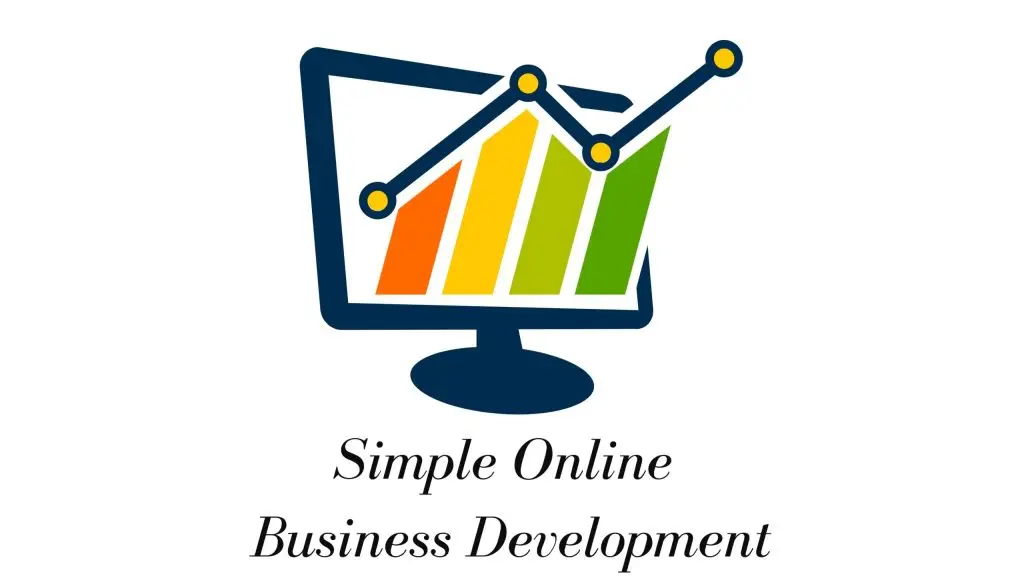Trying to get your business noticed online can feel like a maze. You know you need to be found when people search for what you offer, but how do you actually make that happen? That’s where digital marketing, especially Search Engine Optimization (SEO), comes in. It’s not just about getting more clicks; it’s about connecting with the right people and growing your business in a way that lasts. We’ll look at how a group like Simple SEO Group can help you figure all this out.
Key Takeaways
- Understand how SEO helps your business get seen online.
- Learn why hiring experts like Simple SEO Group makes a difference.
- Discover how tailored strategies can boost your online presence.
- See how good content and strong brand building lead to more customers.
- Find out how Simple SEO Group helps you get real results and grow.
Boost Your Online Presence with Simple SEO Group
Getting your business noticed online these days can feel like shouting into the wind, right? Everyone’s online, but are they finding you? That’s where we come in. Simple SEO Group is all about making sure your business isn’t just another face in the crowd. We help you show up when it matters most – when potential customers are actively looking for what you offer. Think of it like this: instead of hoping people stumble upon your shop, we help you put up a big, bright sign right where they’re already walking.
Understanding the Power of SEO
Search Engine Optimization, or SEO, is basically the art and science of making your website more appealing to search engines like Google. When people type in keywords related to your products or services, you want your business to pop up near the top of the results. This isn’t just about vanity; it’s about getting real, qualified leads. The higher you rank, the more people see you, and the more likely they are to click through to your site. It’s a direct line to customers who are already interested, meaning less wasted effort and more potential sales.
Why Choose Expert SEO Services
Sure, you could try to figure out SEO on your own, but honestly, it’s a complex beast. Search engine algorithms change constantly, and what worked last year might not work today. Trying to keep up can be a full-time job in itself. That’s why partnering with experts makes such a difference. We stay on top of all the latest trends and best practices so you don’t have to. We know the ins and outs of what makes search engines tick, allowing us to build a strategy that actually gets results. It’s about working smarter, not just harder, to get your business seen.
Achieving Top Search Rankings
So, how do we get you to the top? It’s a multi-step process, but here’s a peek at what goes into it:
- Keyword Research: We figure out exactly what terms your potential customers are typing into search engines.
- On-Page Optimization: We tweak your website content and structure to make it super clear to search engines what you’re all about.
- Off-Page Signals: We build your website’s authority and trustworthiness through things like quality backlinks.
- Technical SEO: We make sure your website is technically sound, fast, and easy for search engines to crawl and understand.
It’s a marathon, not a sprint. Building a strong online presence takes time and consistent effort, but the payoff in terms of steady, organic traffic and brand recognition is absolutely worth it. We focus on creating a sustainable strategy that grows with your business.
By focusing on these areas, we aim to move your website up in the search results, bringing more eyes to your business and helping you grow your online presence.
Navigate the Digital Landscape with Confidence

The online world can feel like a maze sometimes, right? With so many different paths and platforms, it’s easy to get lost. But don’t worry, that’s where we come in. We help you figure out the best routes for your business.
Tailored Strategies for Your Business
Think of it like this: you wouldn’t use the same approach to sell ice cream in Alaska as you would in Florida. Your business is unique, and your digital marketing should be too. We don’t do one-size-fits-all. Instead, we look at what makes your business tick and who your ideal customers are. Then, we build a plan that’s just for you.
- Understanding your specific goals.
- Pinpointing your target audience.
- Choosing the right online channels.
Content That Connects and Converts
Great content is the heart of digital marketing. It’s not just about putting words on a page; it’s about creating something that people actually want to read, watch, or interact with. We focus on making content that speaks directly to your audience, answers their questions, and guides them toward becoming loyal customers. Good content makes people feel understood. It’s about building a relationship, not just making a sale.
We believe that authentic content, created with your audience in mind, is the most powerful tool in your digital marketing toolbox. It builds trust and keeps people coming back for more.
Building Brand Authority
Want people to see your business as the go-to expert in your field? That’s where brand authority comes in. It’s about consistently showing up with helpful information and reliable solutions. By sharing your knowledge and demonstrating your commitment to quality, you build trust. This makes customers more likely to choose you over competitors. We help you establish that trust through smart digital marketing strategies that highlight your strengths and build your reputation online.
Unlock Growth Through Strategic Digital Marketing
Getting your business noticed online isn’t just about having a website; it’s about making sure the right people find you when they’re looking for what you offer. That’s where a smart digital marketing plan comes in. It’s like having a map and a compass for the online world, guiding you straight to your potential customers. A well-thought-out strategy makes all the difference.
Driving Targeted Traffic
Imagine people actively searching for the products or services you provide. That’s what we aim for. Instead of just hoping someone stumbles upon your site, we focus on bringing in visitors who are already interested. This means more qualified leads and a better chance of turning browsers into buyers. We use various methods to get these folks to your digital doorstep.
Maximizing Your Marketing Budget
Let’s be real, marketing budgets aren’t infinite. That’s why we focus on making every dollar count. By targeting the right audiences and using the most effective channels, we help you get the most bang for your buck. It’s about smart spending, not just spending more. We look at what’s working and double down, and what’s not? We adjust or cut it. This approach helps you get more online marketing tools without breaking the bank.
Long-Term Organic Growth
While paid ads can give you a quick boost, true, sustainable growth comes from building a strong organic presence. This means creating content that people want to read and share, and making sure search engines can easily find and understand your site. It’s a marathon, not a sprint, but the results are worth it. Building this kind of presence means your business keeps growing even when you’re not actively pushing ads.
We believe in building a solid foundation for your business online. It’s about creating a digital presence that works for you day in and day out, attracting customers naturally and consistently.
Partnering for Success with Simple SEO Group
Working with Simple SEO Group means you’re not just getting a service; you’re gaining a partner dedicated to your success. We believe in a collaborative approach, making sure you’re in the loop every step of the way. It’s all about building something great together.
What to Expect from Experts
When you team up with us, you can expect a clear, straightforward process. We don’t do guesswork. Our team is made up of folks who really know their stuff when it comes to getting websites noticed. They’ve seen it all and know what works. You’ll get honest advice and a realistic look at what it takes to get your business seen online. We’re here to make the complex world of digital marketing feel a lot simpler for you.
Initial Consultation and Goal Setting
It all starts with a chat. We want to hear about your business, what you’re aiming for, and any challenges you’re facing. This isn’t just a sales pitch; it’s a genuine conversation to understand your unique situation. We’ll talk about your business goals, who you’re trying to reach, and what success looks like for you. From there, we can start mapping out a plan that actually makes sense for your company.
Developing Your Custom Plan
Based on our chat, we create a plan that’s made just for you. No cookie-cutter solutions here. We look at your specific needs and tailor our strategies accordingly. This might involve anything from tweaking your website’s structure to creating new content that your audience will love. We focus on what will bring you the best results, whether that’s more website visitors or more customers. We’re all about creating a roadmap that leads directly to your business objectives, helping you achieve measurable results that truly matter.
The Simple SEO Group Advantage
In today’s busy online world, just having a website isn’t enough. You need to stand out, and that’s where Simple SEO Group comes in. We help you cut through the noise and get noticed by the people who matter most to your business. Think of us as your guide to making sure your business shines online.
Standing Out in a Crowded Market
It’s tough out there, right? Everyone’s trying to grab attention. We get it. Our approach focuses on making your business visible to the right audience. We don’t just aim for more visitors; we aim for visitors who are genuinely interested in what you do. This means your marketing efforts work smarter, not just harder. We help you connect with people actively searching for solutions you provide.
Building a Loyal Customer Base
Getting found is the first step, but keeping customers coming back is the real win. We help you build trust and credibility through smart online strategies. When people see you as a reliable source of information and solutions, they stick around. This leads to repeat business and happy customers who become your biggest fans.
Achieving Measurable Results
We’re all about results you can actually see. Forget guessing games; we track what works and what doesn’t. Our strategies are designed to bring in more traffic, increase your leads, and ultimately, boost your sales. We believe in transparency, so you’ll always know how your online presence is growing. Our goal is to make your business grow, plain and simple.
We focus on creating a strong online foundation that attracts and keeps customers. It’s about smart planning and consistent effort, not just quick fixes. This way, your business builds lasting success online.
Ready to Grow?
So, getting your business noticed online isn’t some big mystery. It’s really about having a solid plan and sticking with it. Think of it like tending a garden – you plant the seeds, water them, and give them sunlight, and eventually, you get a great harvest. SEO and good content marketing are like that for your business. It takes a bit of effort upfront, but the payoff is huge. Don’t get discouraged if you don’t see massive changes overnight. Keep at it, maybe get some help from folks who know their stuff, and you’ll definitely see your business bloom online. It’s totally doable!
Frequently Asked Questions
What exactly is SEO and why is it important for my business?
SEO helps your website show up higher in search results when people look for things you offer. This means more people will visit your site, and hopefully, buy from you.
How can digital marketing experts help my business grow?
Experts know the best ways to make your website more visible. They create plans that fit your business, write content that people like, and help you become known as an expert in your field.
What should I expect when I start working with a digital marketing team?
Experts will first talk to you to understand what you want to achieve. Then, they’ll create a special plan just for your business, outlining all the steps they’ll take.
How does SEO help bring the right customers to my website?
SEO brings people who are already looking for what you sell to your website. This means they are more likely to become customers. It’s a smart way to spend your money.
Is SEO a good way to save money on marketing?
Yes, SEO is often more budget-friendly in the long run compared to ads. While ads give quick results, SEO builds lasting visibility and can bring in customers over time without constant spending.
How do experts help my business stand out and build loyal customers?
Experts help you stand out from other businesses. They build your brand’s reputation and create a following of loyal customers who trust you and keep coming back.








































